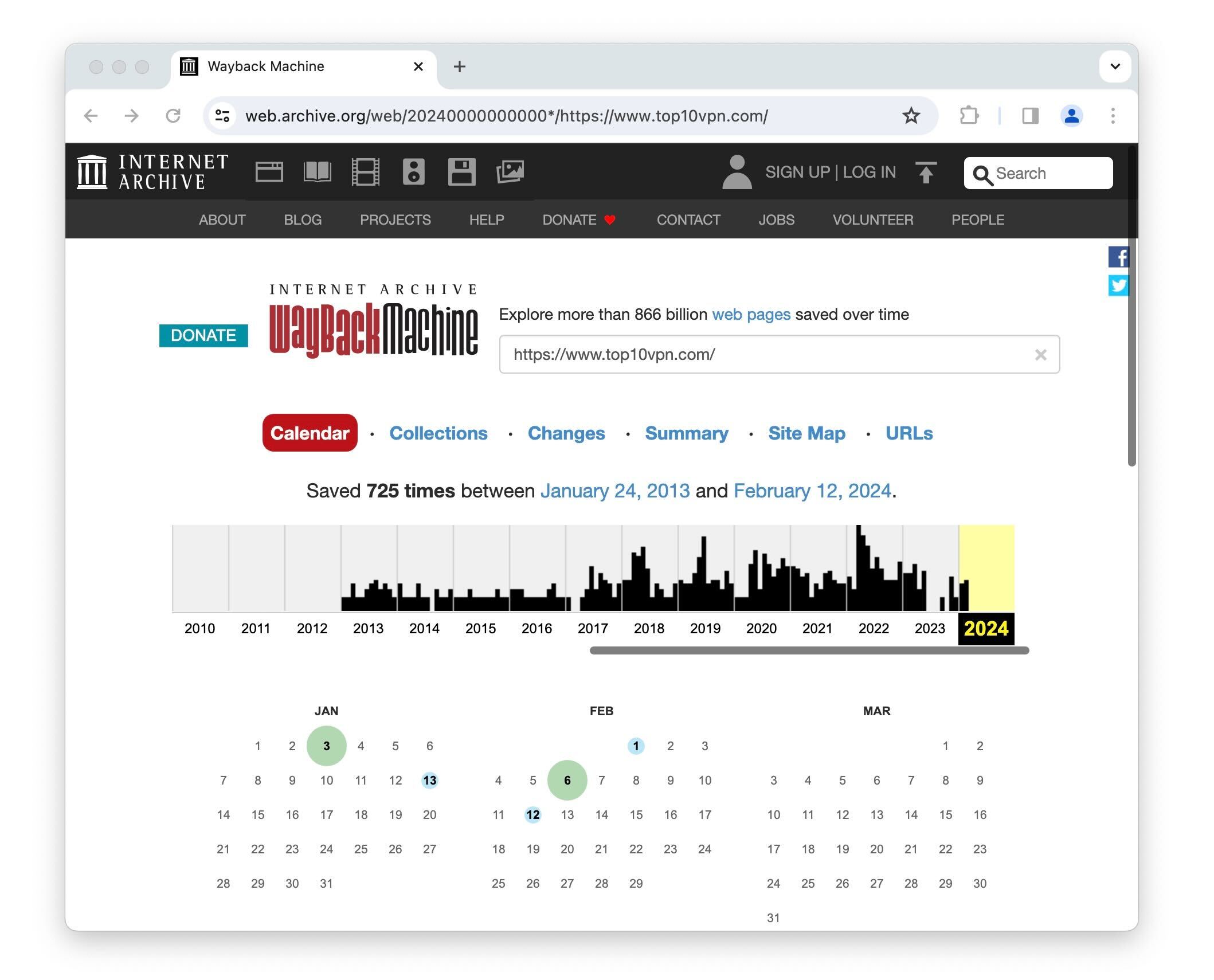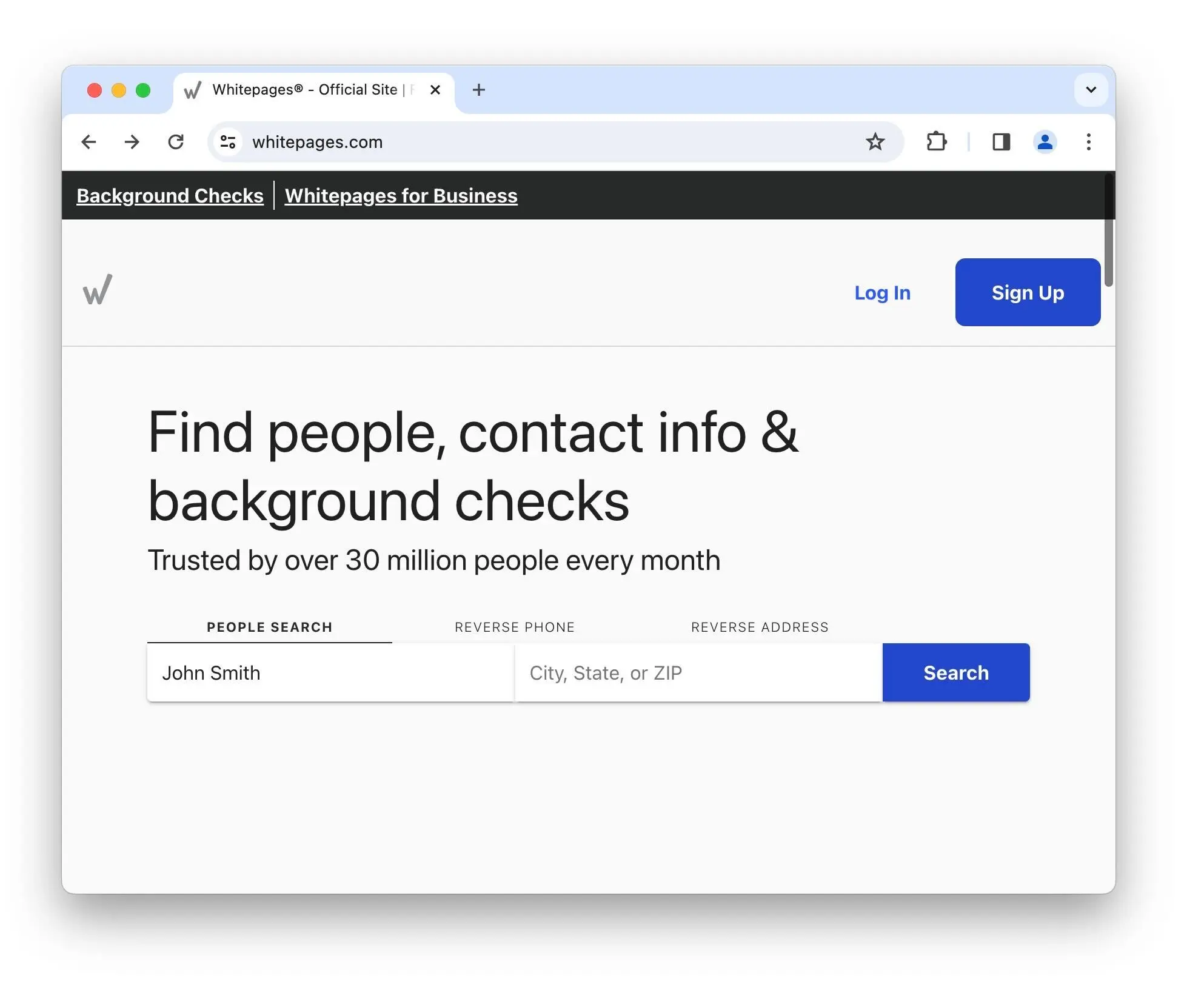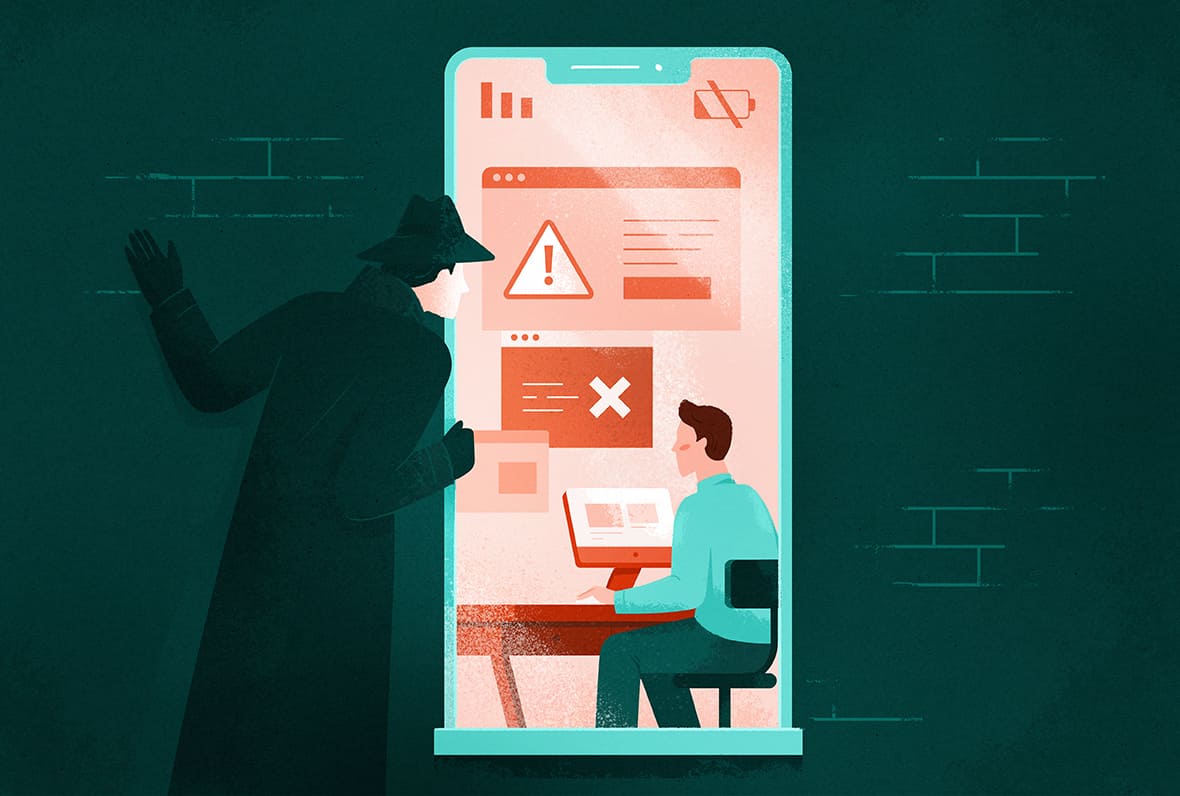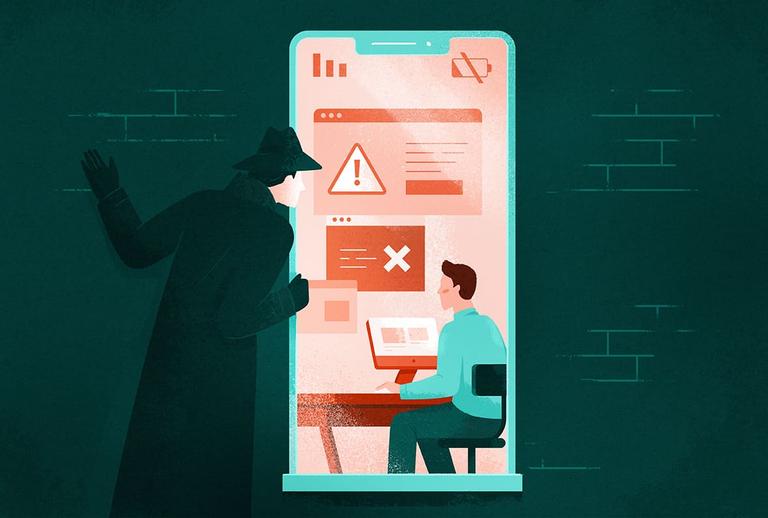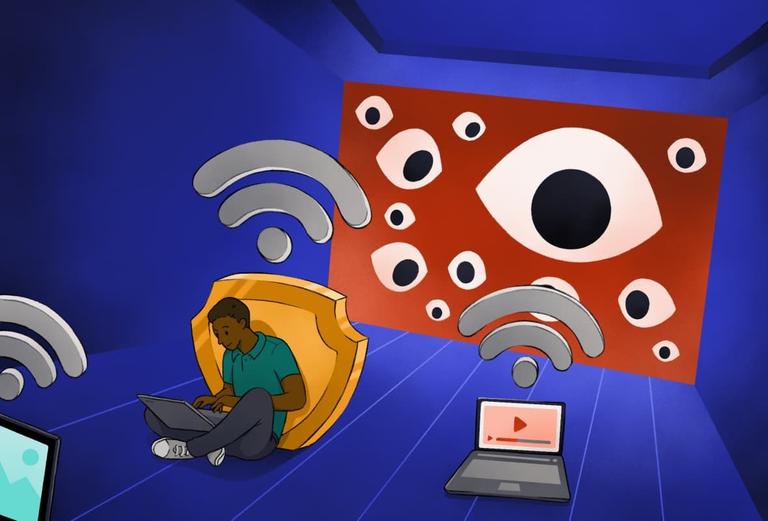Once you’ve identified exactly where your name, address, or any other personal information is visible online, you can take steps to remove it.
Here are eight of the most effective ways to remove all information about you from the internet:
Finding and removing personal information from the Internet manually can be difficult and time consuming. There could be hundreds of websites or brokers with access to your data, and they’re not always easy to contact.
Fortunately, there are services that will do it for you. These include Incogni, DeleteMe, Kanary, and Optery.
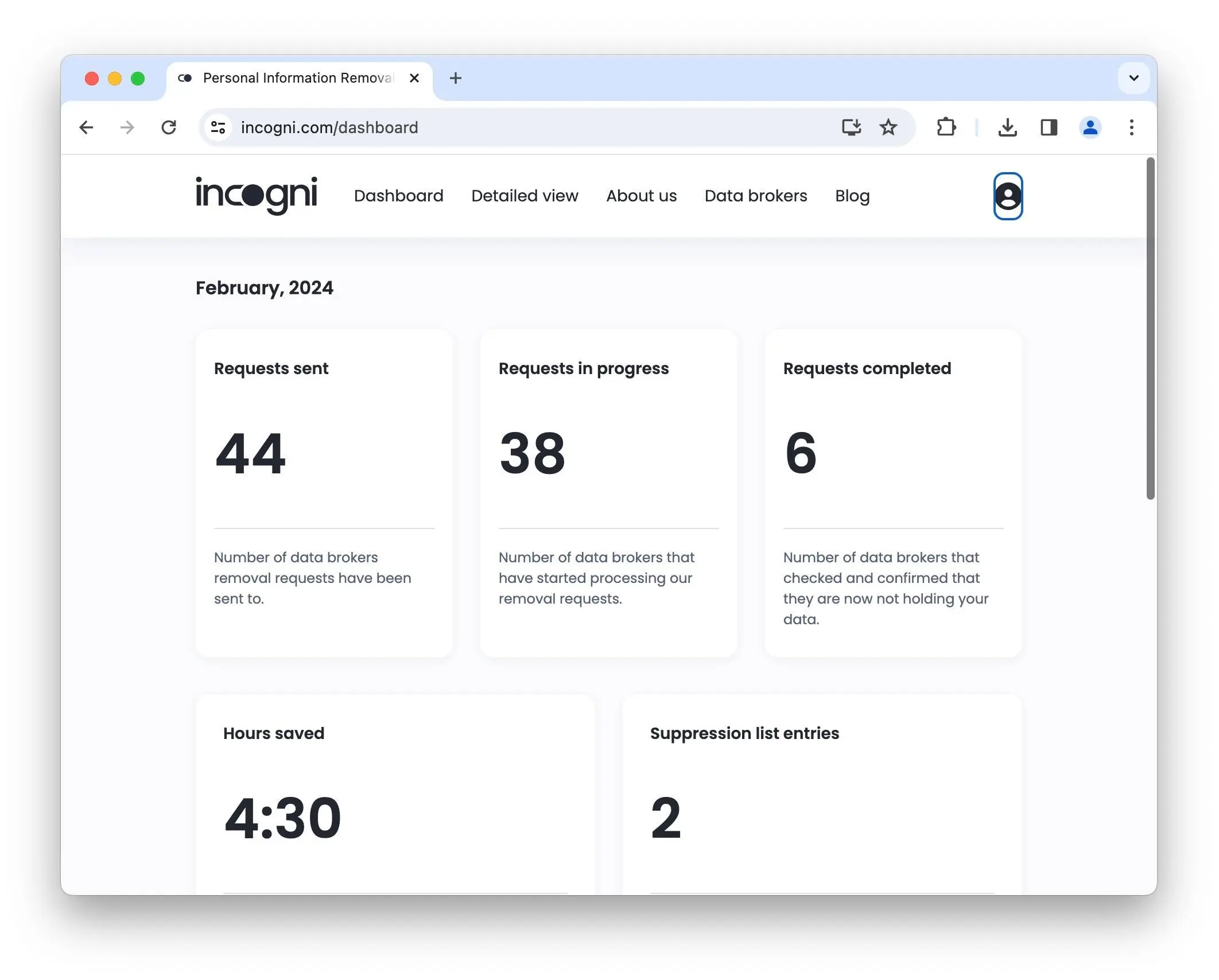
Surfshark’s Incogni effectively removes your personal data from the internet.
NOTE: The correct domain name for DeleteMe, which has been operating out of the US for more than ten years, is joindeleteme.com. The company that owns deleteme.com is unrelated to the information removal service.
For less than $20 per month, these services continually look for your information online and ask for it to be removed. They’ll also request that data brokers remove your personal information, which can hold a frightening amount of sensitive data.
In the table below, we outline the pros and cons of using an personal information removal service:
| Pros |
Cons |
| They know where to look for your information, and who to contact to have it removed. |
You have to pay for them. While some have limited free tiers, most services typically charge from $8 to $15 per month for removal. |
| They can check for your information regularly, and take it down if it reappears. They can look for new directories or data brokers, too. |
They’re only effective as long as you’re subscribing. Your data is likely to reappear online eventually, and without a subscription it’s unlikely to be removed again. |
| They can approach many more sites than you can — often hundreds at a time. |
You have to voluntarily give the removal service your information so they can match it online and issue removal requests. |
| They are better able to remove your information from data brokers. |
Removal services tend to focus on the US where public directories are commonplace. |
The biggest advantage to using a dedicated company to remove your personal information is the convenience. For a small monthly cost, they can remove your personal data from hundreds of different websites, contact data brokers on your behalf, and check to make sure your data never reappears. It’s quicker and often much more effective than doing it yourself.
Users speak favorably of the services we’ve mentioned. They are less time-consuming than issuing manual requests, and less likely to overlook one of the major sites or brokers.
Based on our own experience, we recommend Incogni as the best service to remove personal information from the Internet. It finds and deletes your personal data from hundreds of websites including people search databases, recruitment websites, financial services, and marketing data brokers.
Incogni costs just $6.49 on its cheapest subscription plan, and it also offers a 30 day refund guarantee if you’re unhappy with the service.
EXPERT ADVICE: Dark web monitoring services (available from Norton and Firefox among others) can check if your personal information is being traded on the dark web. You can’t remove it, but you can at least know if your credit card or date of birth has been exposed. HaveIBeenPwned also offers a free service to check if your email address was involved in a data breach.
Everything you share on social media is online and, in some cases, available for anyone to see or for data brokers to harvest.
There are three steps to taking control of the data on your social media profiles: auditing your presence, removing your data, and securing your accounts.
Audit Your Social Media Presence
First, draw up a table like the one below to audit your social media profile online. Identify the social networks you use and those dormant accounts where you don’t need the service anymore.
| Social Media Platform |
Actively using |
Dormant account |
No account |
| Facebook |
✓ |
✕ |
✕ |
| Instagram |
✕ |
✓ |
✕ |
| LinkedIn |
✕ |
✕ |
✓ |
| Mastodon |
|
|
|
| Pinterest |
|
|
|
| Quora |
|
|
|
| Reddit |
|
|
|
| Threads |
|
|
|
| TikTok |
|
|
|
| Tumblr |
|
|
|
| X (Twitter) |
|
|
|
| YouTube |
|
|
|
We’ve listed the top social networks you might want to check, but you should also check any others that might apply. Wikipedia has a list of the major social networks and communications services, including those popular in China and India.
EXPERT ADVICE: If you’re not sure whether you have an account, try using the password reset feature to log in. If you get a password reset email, you have an account.
Close Dormant Social Media Accounts
We recommend you delete social media accounts you aren’t using. To do this, follow these steps:
- Log in to your account. If you can’t remember your password, reset it by entering your email address.
- Save important data. Review your profile and posts and copy any information you want to keep. Check for important photos and contact details, especially.
Twitter (X) and Facebook have a feature to download all your account information in one go, and it comes with a menu that makes it easy to read in your browser.
- On Facebook or Instagram visit the Meta Accounts Center and select Your Information and Permissions > Download Your Information.
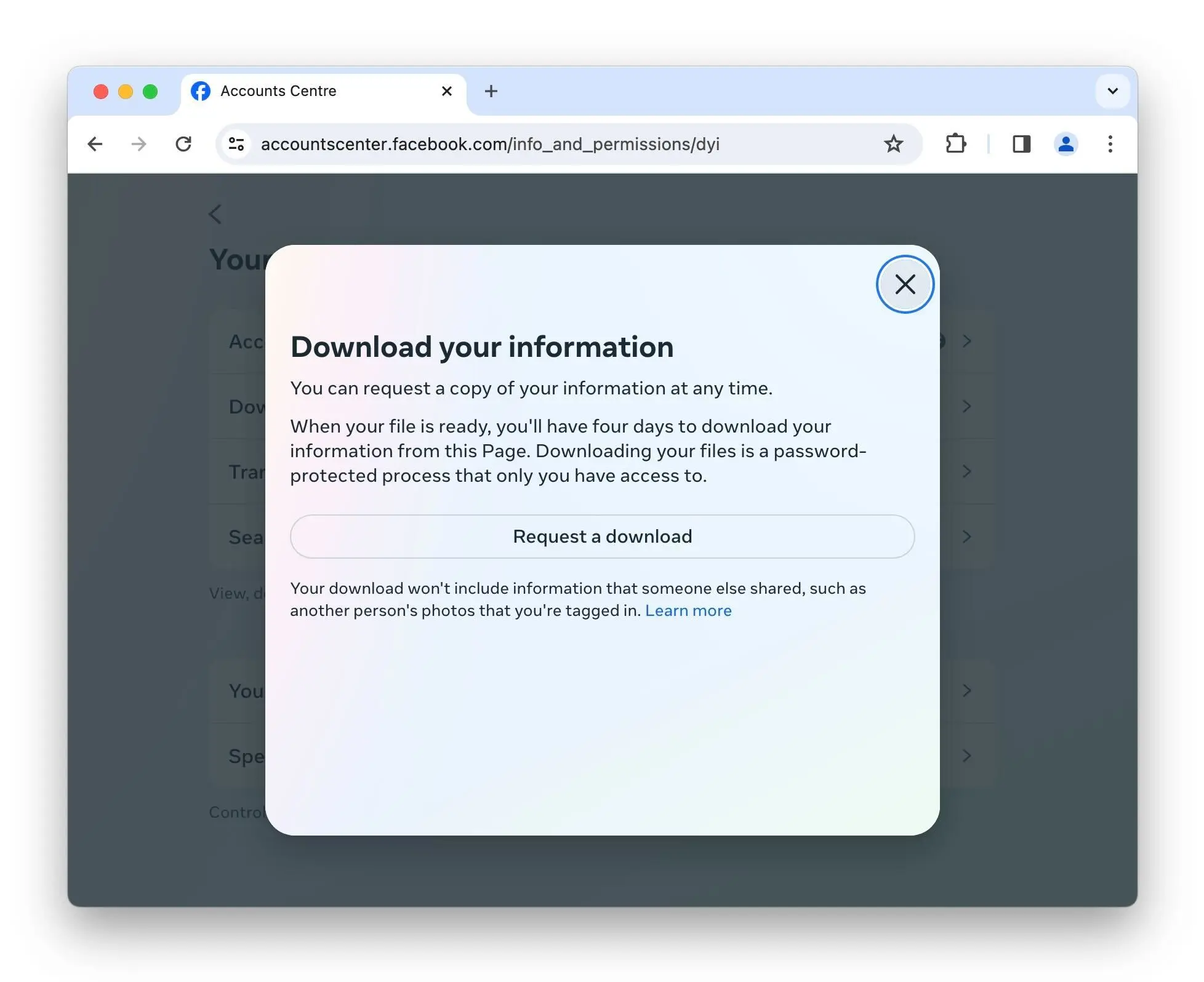
- On Twitter (X), you can find the feature at Settings and Privacy > Download An Archive of Your Data.
- Delete your account. Go into your account settings and find the option to delete your account.
- On Facebook or Instagram, go to the Meta Accounts Center, choose Personal Details > Account Ownership and Control > Deactivation or Deletion.
Facebook will encourage you to deactivate your account, which means you can activate it again later. We recommend you delete your account if you’re sure you want to remove it, so that the data is deleted from Facebook’s servers.
- On Twitter (X), go to Settings and Privacy > Your Account > Deactivate Your Account. If you deactivate your account and don’t use it for 30 days, it is permanently deleted automatically.
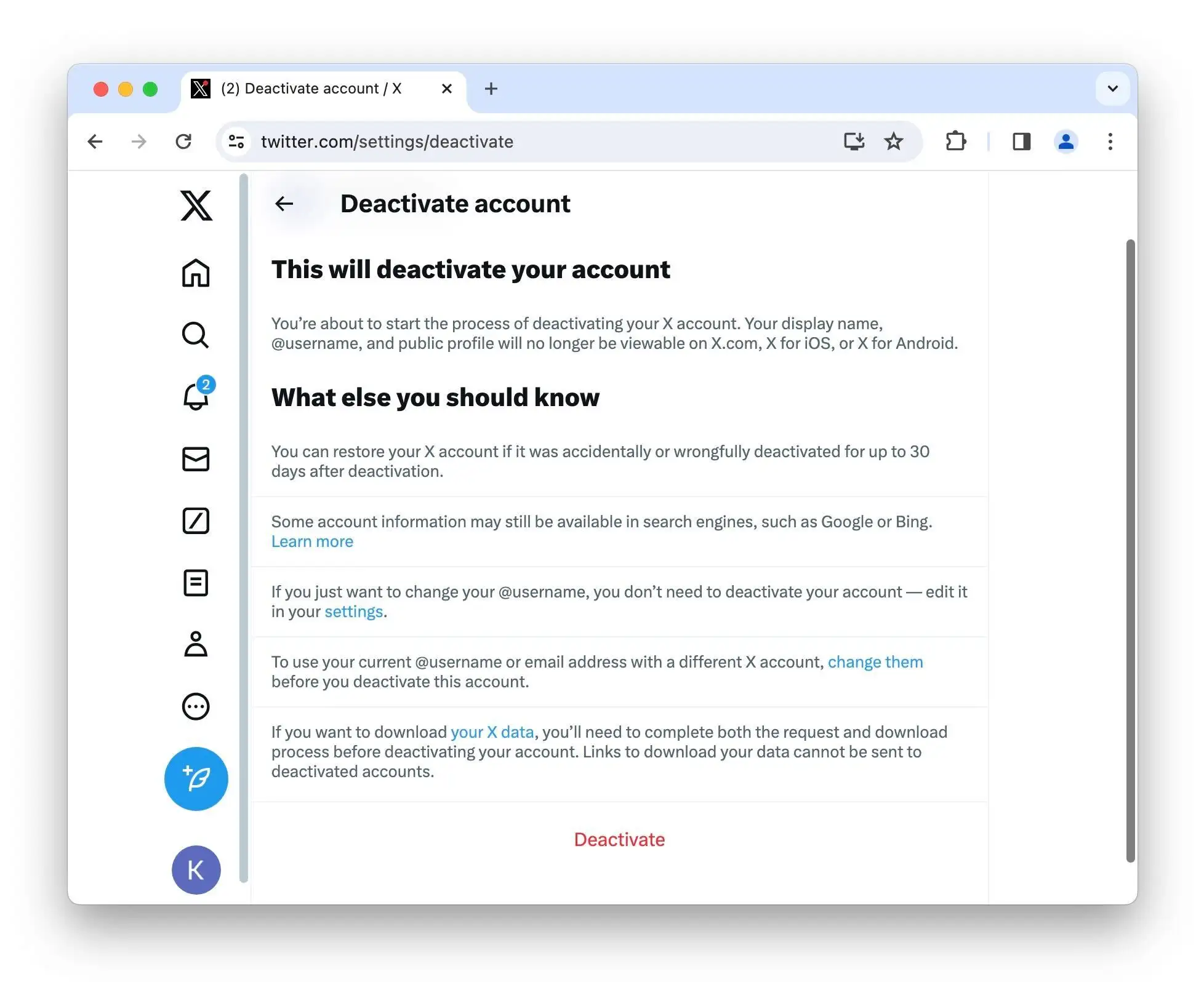
Secure Active Social Media Accounts
To secure the social media accounts you want to keep using, follow these steps:
- Make your account private. On some social networks, you can change the settings so only your followers can see your content. You review and authorize future followers.
- On Twitter (X), for example, go to Settings > Privacy and Safety > Audience, Media and Tagging. Here you can protect your posts, which means only people who follow you can see them.
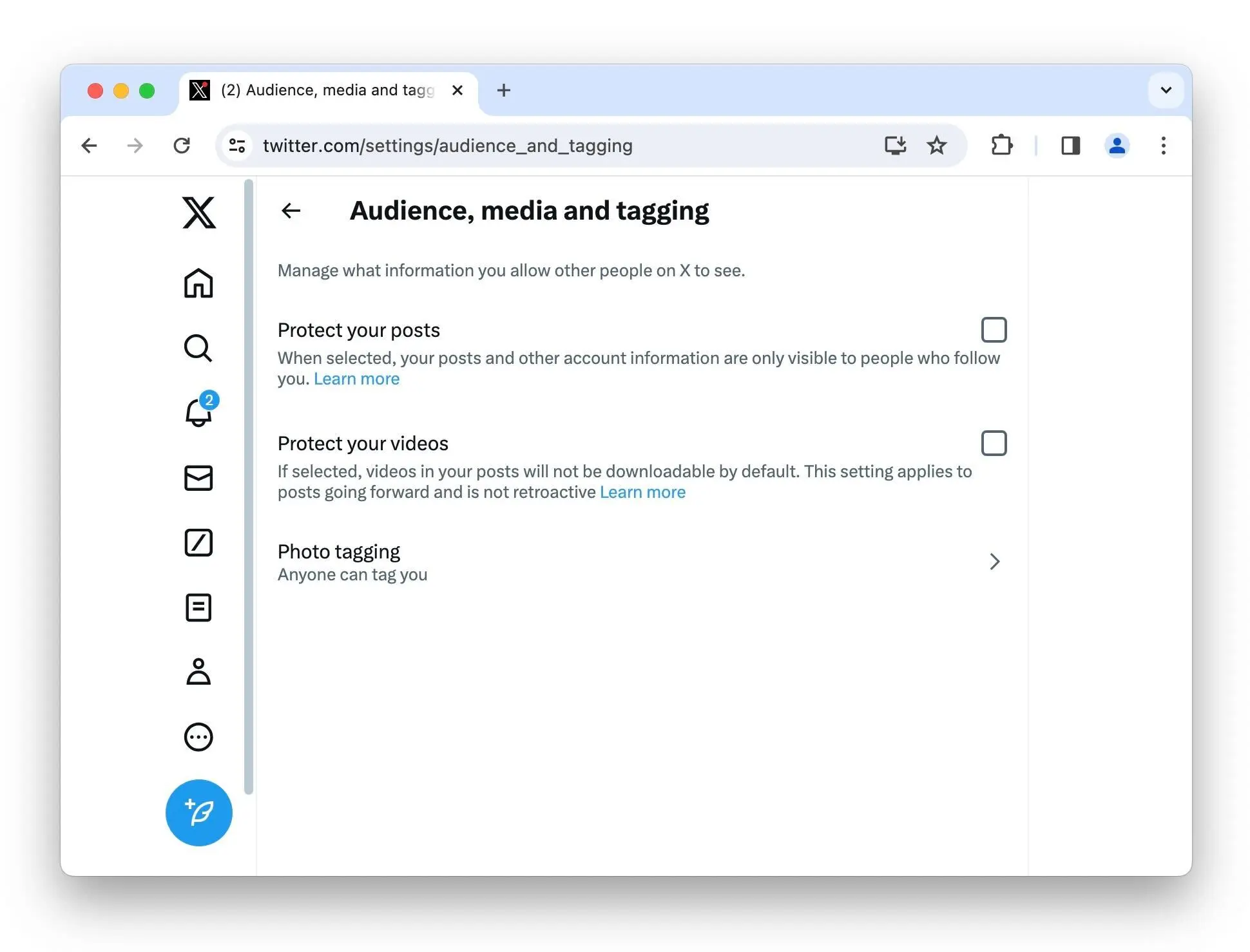
- On Instagram, go to Settings > Account Privacy and enable a private account.
- Remove unwanted friends and followers. Even if you make your account private, your friends and followers can still see your profile and post history. It’s possible that they could share that information, or it could leak if their accounts are hacked.
Review your friends and followers and remove any that you don’t want to have access to your information anymore.
- Edit your public profile. Your profile may include your name, location, or your photo, all of which you might want to remove. If there is information you’re forced to fill in that you don’t want to disclose, use fake data.
- Tidy up your posts. You might have shared information in the past that you wouldn’t want to disclose today. Go through your past posts and delete any that contain sensitive information.
- Check what friends have shared. If friends have shared photos of you or posts you’d rather keep private, ask them to remove them.
3. Understand your Legal Rights
In some countries, you can use internet privacy laws to have personal information removed from the internet.
Although the United Nations Declaration of Human Rights includes a right to privacy, there are different levels of legal protection worldwide.
France and Germany have had privacy laws since the 1970s, but the US has relatively few protections outside of the 2018 California Consumer Privacy Act (CCPA).
Often, you must fall back on voluntary data removal arrangements because the companies publishing data aren’t doing anything illegal.
In the EU and UK, there is a right to erasure (often called a right to be forgotten). This applies to companies collecting data about you, but can also be applied to information they publish about you.
You can ask for data to be deleted because the reason it was collected no longer applies, you withdraw your consent to data collection, or you object to your data being used for marketing purposes. Information that protects the public or informs them about something important (information in “the public interest”) overrides any right to privacy.
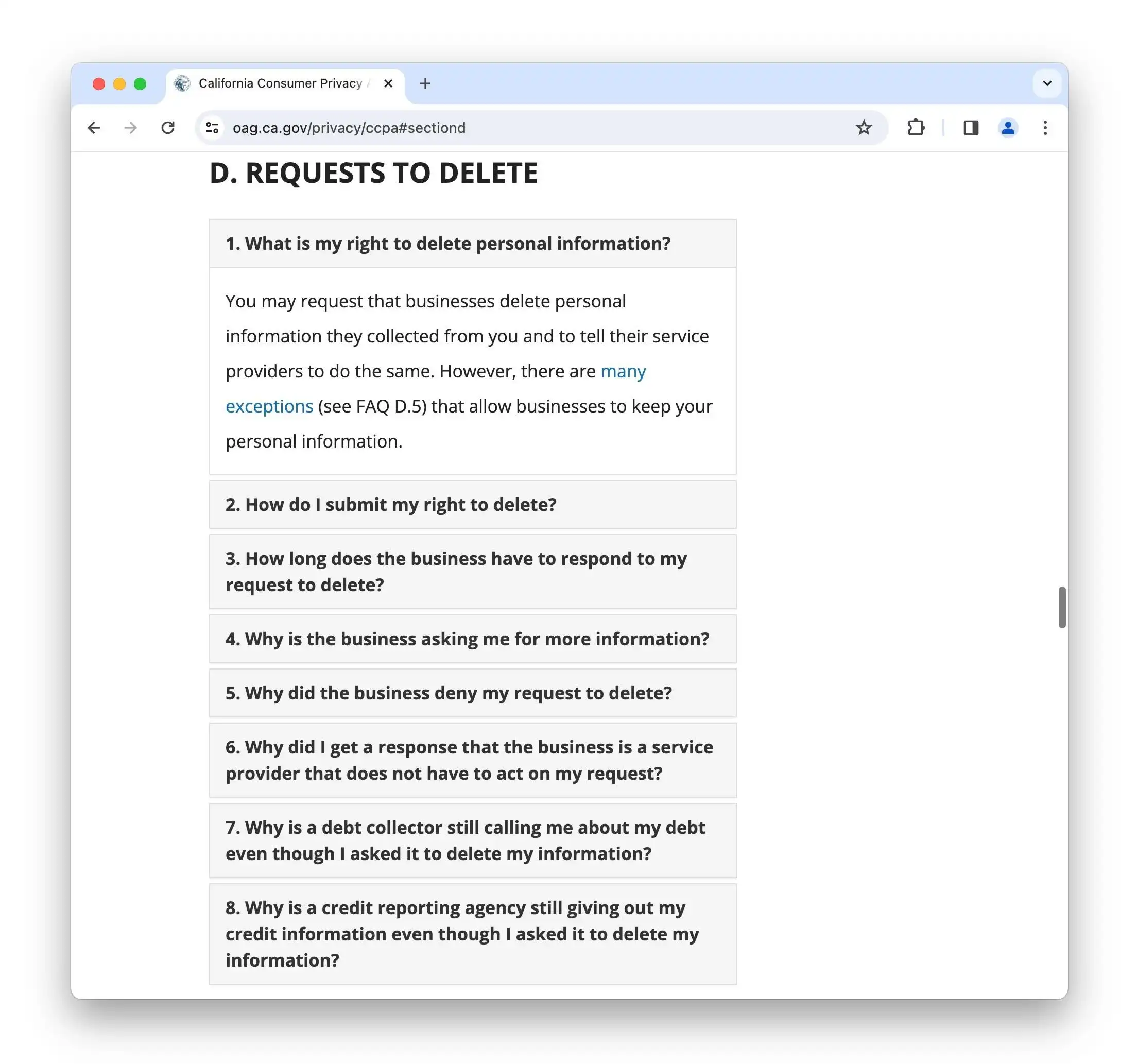
The California Consumer Privacy Act aims to enhance consumer privacy rights.
Google takes the view that information about someone’s public role is in the public interest, so it won’t usually remove information about politicians or negative information about your work.
Accurate news reports about past misdemeanors may be difficult to scrub from the web, and Google won’t remove data that has been published by a government agency.
Large web companies often have processes to receive removal requests, but you’ll need to rely on the goodwill of the site operators. It’s difficult to enforce your rights against a site that isn’t cooperating.
This overview of privacy law worldwide summarizes citizens’ rights to privacy in many countries.
4. Remove Personal Information from Websites
Information about you or photos of you might be published in blogs, newspapers, or websites operated by companies you have worked for. In some cases, pictures of you at an event might appear online, or your previous employer’s team page might still show your details.
If this happens, we recommend you contact the website operator to ask them to remove the content you object to. Most websites will have a “Contact Us” section, and some will have a facility to contact the person who wrote the article.
If not, you can try finding out who hosts the site by looking up the domain name provider through a service like WhoIs.com. Most results now hide the actual website owner’s identity, though.
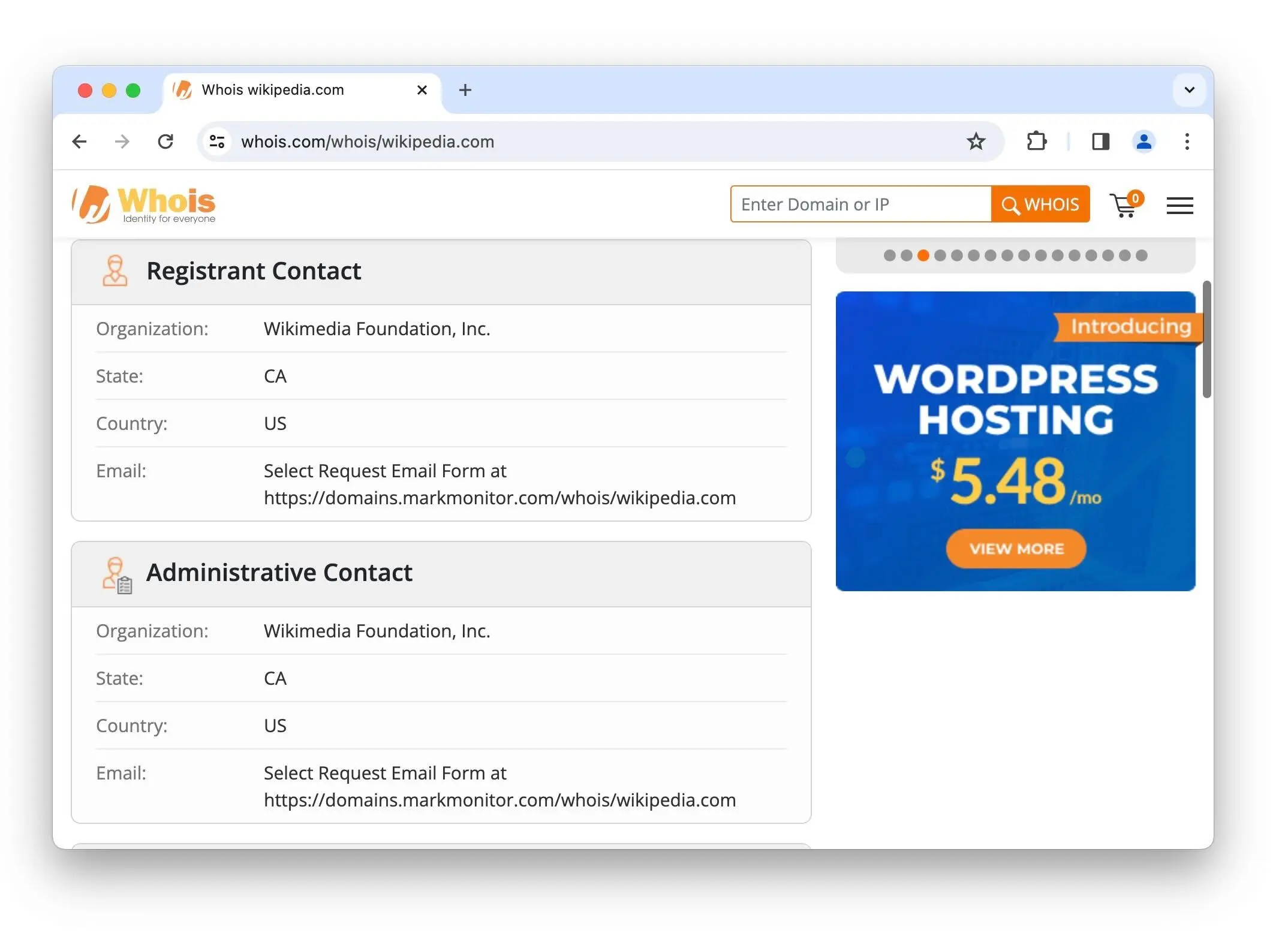
WhoIs.com provides domain information and administrative contact details for websites.
Whatever your legal rights might be, you need the website operator to cooperate in amending or removing information. We recommend you write a polite email asking them to kindly remove the content and explaining why that’s important to you.
5. Remove Personal Information from Search Engines
If there is information about you on a public web page, search engines are likely to find it and index it.
Most people find information through search engines. If you can remove a web page from a search engine’s index, it’s much less likely that someone will discover it.
EXPERT ADVICE: If you can’t get a website to remove information about you, removing it from Google means most people won’t find it.
Removing Content From Google
Google has processes to remove personally identifiable information and inappropriate images from Google Search.
There are several approaches you can take to remove your personal information from Google:
- Use the content removal form to request the removal of content containing personal information, nudity or sexual material, or content showing someone under 18. You can also request the removal of content on a site that has exploitative removal practices, like charging you to take information down.
- The Legal Help Center accepts removal requests for content that violates the law or your rights. If you have a legal case to argue, you can make a request through both the content removal form and the Legal Help Center, so you have two routes to get content removed. It might be quicker than relying on either route alone.
- The Personally Identifiable Information (PII) form enables you to remove sensitive personal data or any data that can be used to expose your identity (“doxing”).
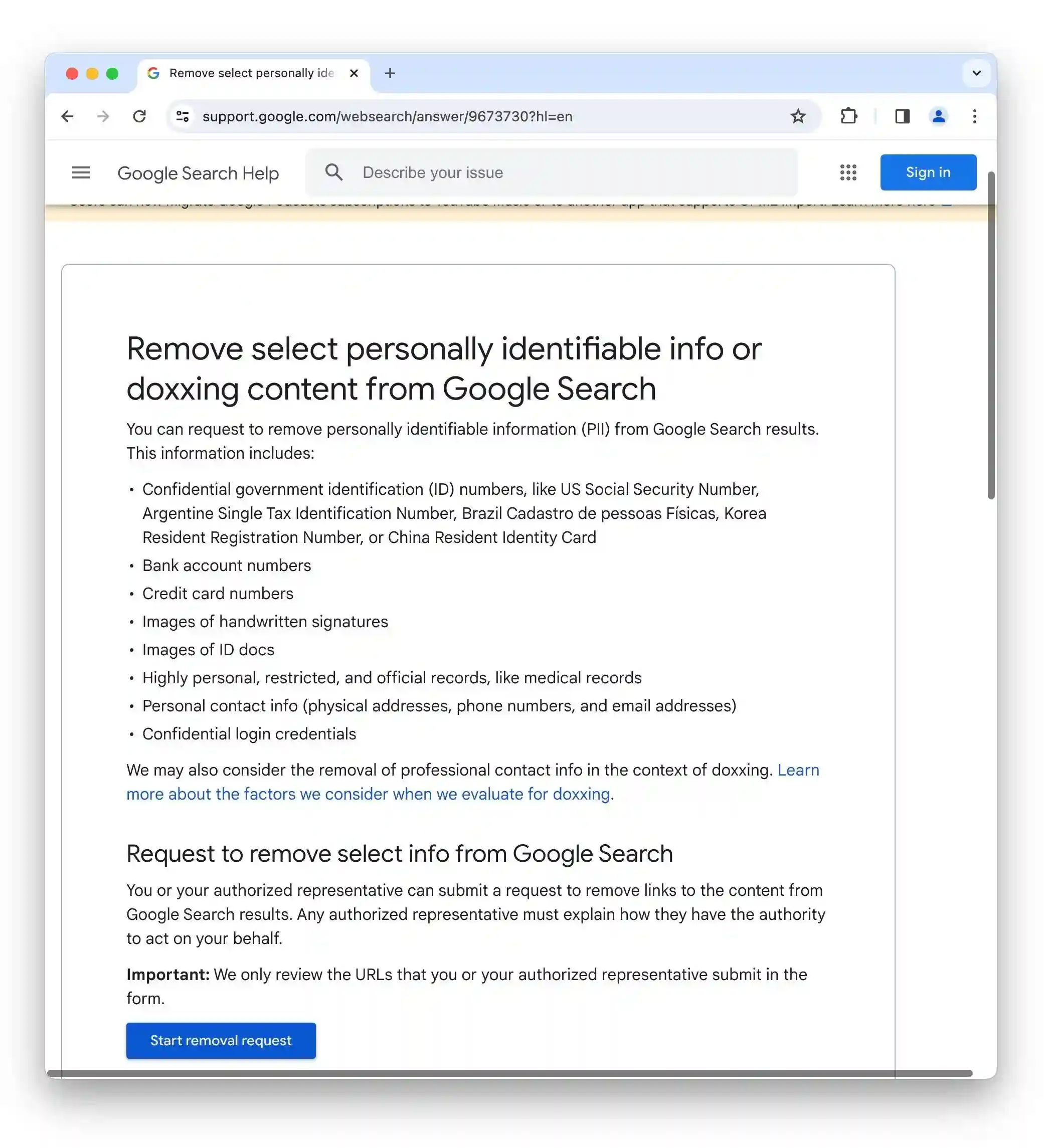
Google’s form to remove personally Identifiable information from Google Search.
This includes government ID numbers (e.g. social security numbers), bank account numbers, credit card numbers, images of your signature or identity documents, contact information (including email addresses) and login credentials.
It also includes highly personal official records, such as medical records. In some cases, Google will remove professional contact information if it’s published alongside threatening content.
- The outdated content form is useful if you’ve persuaded a website to update or remove information about you, but Google hasn’t updated its search results yet. Google does update its search index automatically, but this might take some time.
Removing Content From Bing
You can file a report with Bing to remove exposed personal information, unlawful content, malicious websites, and offensive or harmful material. To report an outdated website, choose the “something else” option.
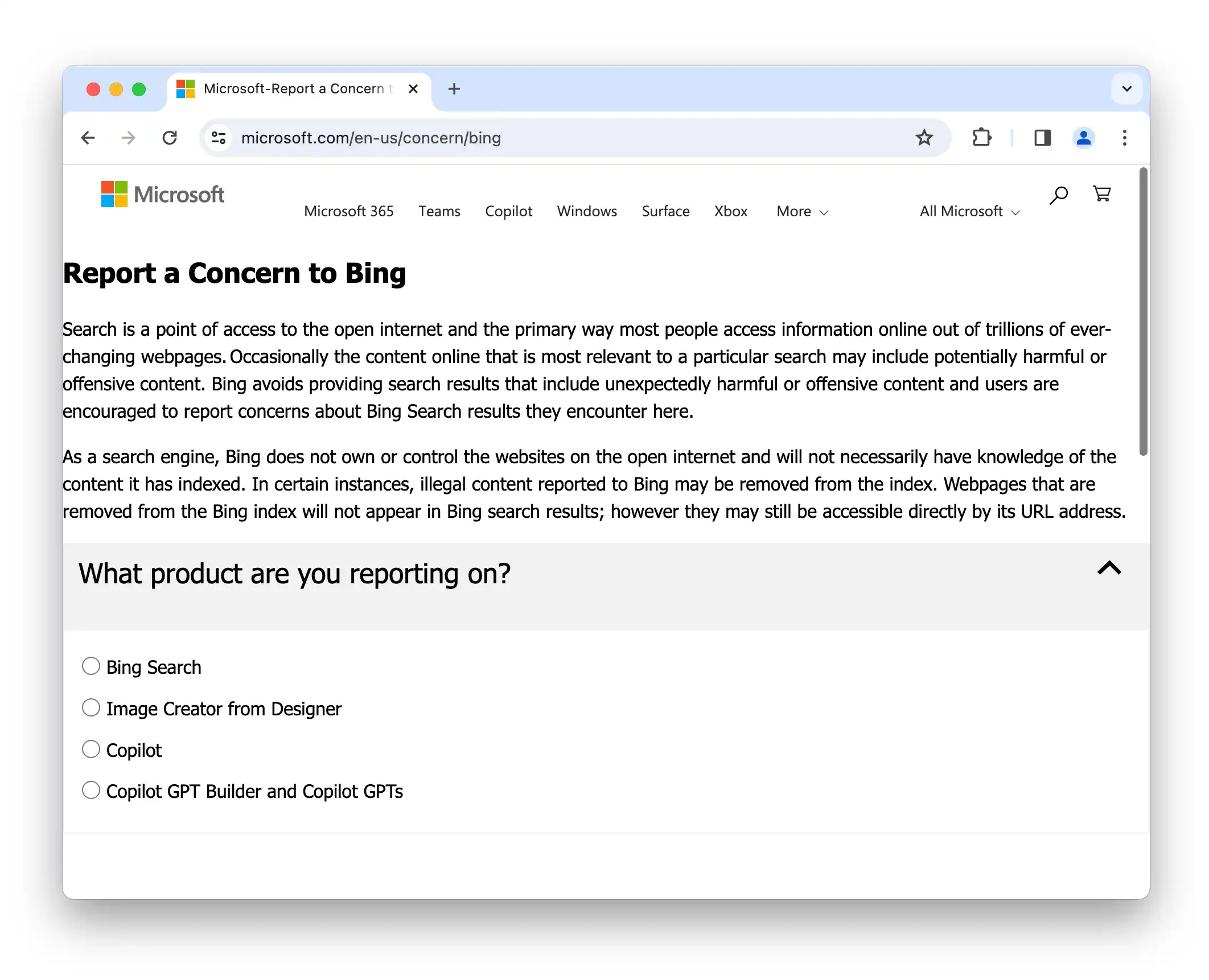
Report a concern to remove personal information from Bing.
Removing Content From Yahoo
Yahoo’s guidance on removing search results isn’t completely clear. However, it does state that you can issue a removal request by visiting the support site. To do this, select: Contact Us > Search > Desktop then choose a topic to remove a search result.
Removing Content From DuckDuckGo
DuckDuckGo is a search engine that promises not to track your searches or profile you.
The DuckDuckGo privacy rights page includes an email address and phone number you can contact in order to remove personal information from the search results, but a spokesperson told us that they also encourage users to use the Share Feedback link shown next to search results.
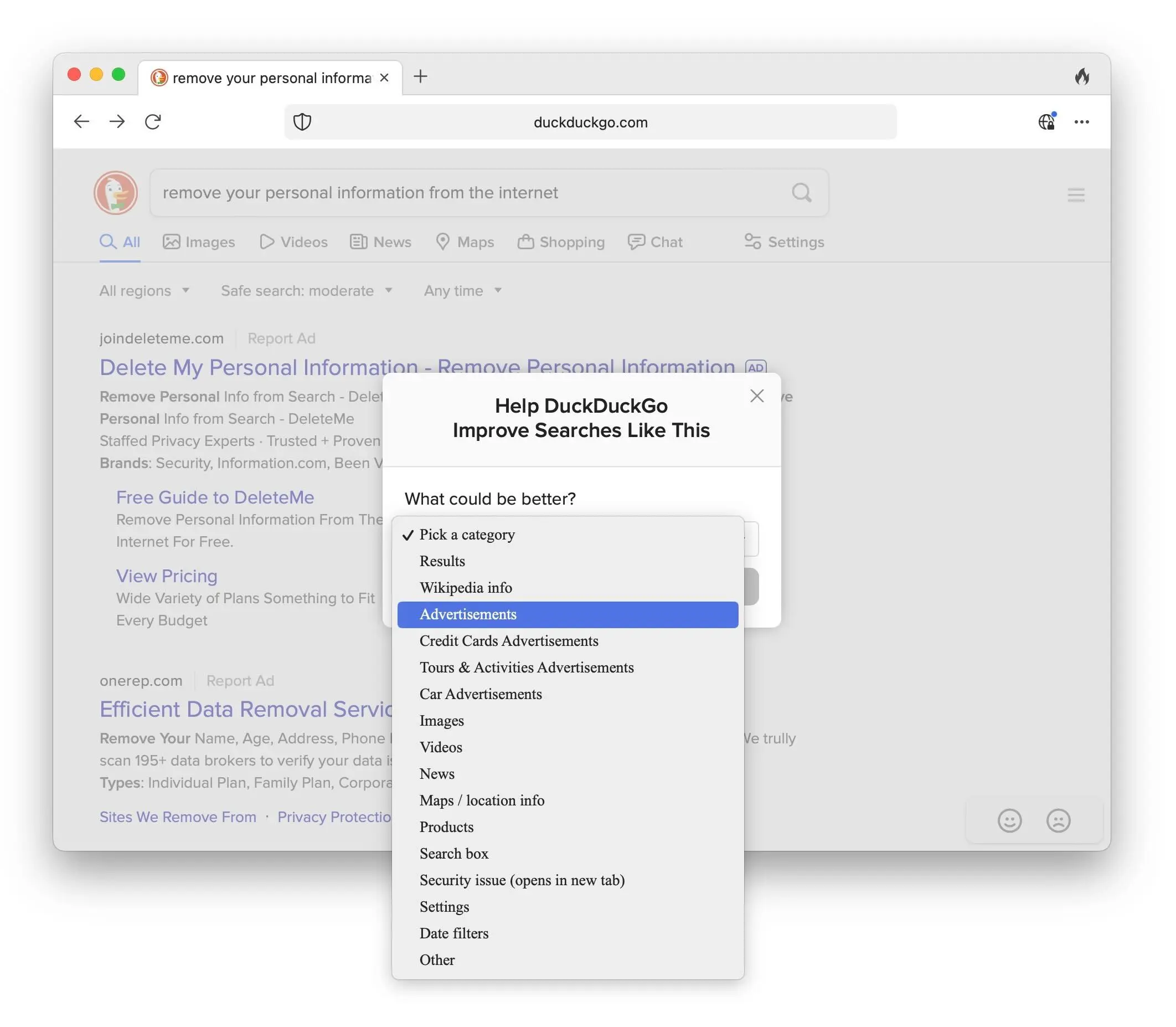
DuckDuckGo encourages users to provide feedback on search results.
Removing Content From Other Search Engines
If other search engines are popular in your country, or you’re aware that they also list content you’d like removed, send them a removal request, too. Try searching for “how to remove content from [search engine name]” to find instructions or visit the search engine’s support pages.
6. Search for Personal Information in Online Directories and Databases
Online “people search” directories collate and share information on individuals, usually
charging users for access. These services typically operate in the US, where privacy protections are relatively weak.
Information is gathered from social networks, dating websites, and public records. The directories attempt to collect and share data including:
- Past and current addresses
- Date of birth
- Political affiliation
- Email addresses
- Criminal records
- Work history
- Neighbors and associates
Many directories operate a similar business model. When you search for a person, the site will give you a small report and then encourage you to subscribe to view the full report.
Online directories sometimes try to scare you into subscribing. For example, MyLife says that records may be inaccurate, but charges you to view and correct any errors in your own record.
The Federal Trade Commission took action against MyLife for implying that people might have criminal or sexual offender records when they didn’t.
How To Remove Your Data From People Search Directories
Many directories have an opt-out process. Although each one only takes a few minutes, you’ll need to complete lots of them to remove your data from everywhere.
Typically, you need to find your profile first and then add the link to your profile in the opt-out form.
You may need to provide additional information to verify your identity. In some cases, you can use a disposable temporary email address. If you share identity documents, obscure any information such as an ID number that is not essential to validate your identity.
Here are the links to remove your data from the major people search directories:
How Effective Is Removing Your Data Manually?
People search websites claim they’re providing a public service by collecting information that is already public. These sites may be resistant to removing profiles, but more willing to cooperate if you tell them you have reason to be concerned for your safety.
The directories operate like search engines, seeking and collecting information online. Your profile may be reactivated if they search the web and discover it again.
The best way to minimize your data in directories is to reduce the amount of information about you that is available online in the first place.
7. Handling Public Records and Government Databases
In many countries, the government publishes information about its citizens. This information ends up being compiled and shared by online directories. Sometimes there are steps you can take to remove your information from the government’s public records.
In the UK, for example, the open register of voters is published and sold. Citizens can opt out of it without affecting their right to vote. The right to opt out wasn’t introduced until 2002, though, and old electoral data can still be found on sites such as 192.com.
Also in the UK, Companies House publishes the name, nationality, and birth month and year of all company directors, together with a correspondence address. The correspondence address does not need to be your home address, so directors often use their accountant’s or agent’s address instead to protect their privacy.
In the US, the data published varies by state but includes:
- Driver’s license information
- Birth, marriage and death records
- Voter registrations
- Court files and arrest records
- Property ownership information
- Occupational licenses
- Government business contracts
- Securities and Exchange Commission (SEC) filings
The county clerk’s office holds many public records, so try calling them to see what information can be removed or changed. Ask about their ID verification and paperwork requirements so you can get it right the first time.
On some records, you might be able to replace your home address with a PO box address. You might be able to have your phone number or social security number removed or partially obscured, too.
Your local Department of Motor Vehicles (DMV) might also be open to replacing your real address with a PO box address.
Some government information is likely to remain in the public domain, but if your safety or the safety of others is at risk, you might be able to have your records sealed, stopping any access.
8. Manage Your Data in Databases
So far we’ve discussed information that is published online and is easily accessible through search engines. However, there is another source of information online: data breaches.
These typically happen when hackers target a company’s database and steal data from it, posting the data online or selling it to other criminals.
In 2023, data was stolen from companies 3,205 times, a rise of 78% on the previous year.
It’s almost impossible to remove your personal information if it’s been published in one of these data breaches.
To reduce the risk to your privacy, try to reduce the number of companies that hold your data by closing any unused accounts.
If you’ve registered for websites in the past, they will have stored your data. You can usually log in to your account and find an option to close it or send a support request to ask them to close it for you.
Follow these steps:
- Close old email accounts: If you have an unused email account, it could contain information about you, your work, and your friends.
- Close old shopping accounts: Shopping accounts are particularly prized targets for hackers because they often store credit card details. Close any accounts you aren’t using and ask them to delete your information.
- Don’t store your credit card in new shopping accounts: Some shops ask whether you want your payment information to be stored to speed up your checkout next time. It’s safer to decline this offer to prevent your credit card data leaking online if there’s a data breach.
- Close old forum accounts: If you posted on a forum in the past using your real name, that information could be found and linked to you.
- Close old blogging accounts: Log in to old blogging accounts and delete your account or change the settings to make all the content private. Platforms you might have used include Blogger, WordPress, or Tumblr.
- Delete unused apps: Apps on your devices, especially free apps, may profile you and sell your information to advertisers.
- Lock down the apps you use: Check your privacy settings to ensure that apps do not have more permission than they need. For example, only enable location services in apps that need them, and only when you’re actively using the app.
- Decline cookies: Sites often give you the option to accept only essential cookies, which reduces how much they can track you online. We recommend declining optional cookies to prevent sites profiling you in depth. Your browser’s private browsing mode and do-not-track settings can help to reduce the extent to which websites can track you, too.
In some cases, closing your account may not remove the data from the database. Check with the website and send a separate data removal request if not.
For old, unused accounts, there is unlikely to be an objection. For accounts that were recently used, the organization may need to keep some data to comply with its legal obligations.
